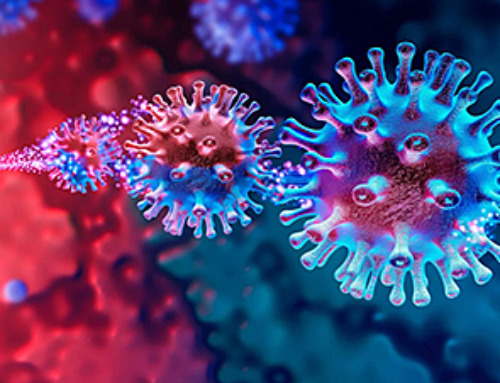In an article available as a pre-proof in the journal Carbon, researchers used electrospinning methodologies to develop an air cathode built of self-sustaining nitrogen-doped reduced graphene oxide@carbon nanofiber (N rGO@CNF) hybrid sheets suitable for microbial fuel cells.
Microbial Fuel Cells for Bioenergy Production
It is critical to develop eco-friendly and sustainable technology in light of rising climate change consequences and global energy demand.
Microbial fuel cells (MFCs), a developing biological electrolytic system with good prospects as a maintainable bioenergy generation system, have piqued scientists’ curiosity for the past few years since they can concurrently produce electricity as well as treat water waste by transforming chemical energy contained in organic material to electricity with the help of microbes and fuel (usually wastewater).
MFC outperforms alternative methods for producing energy from biological material in terms of operating and functional characteristics, such as excellent direct effectiveness, ambient temperature functioning, and no need for supplementary energy or gas treatment.
Composition of a Typical MFC
The organic materials undergo oxidation in the anode compartment, generating protons and electrons. The electrons then move via an exterior circuit, yielding electrical energy, whereas the protons move to the cathode compartment via the electrolyte, in which they interact with the electron acceptors (O2). This results in the oxygen reduction reaction (ORR), which produces water using a two-electron or four-electron mechanism.
How to Improve Performance of Air Cathode in MFCs
In a singular chambered microbial fuel cell, the typical air cathode comprises of three parts: the catalytic layer (CL), the substrate or the supporting layer (SL), and the conducting gas diffusion layer (GDL). Since the effectiveness of the air cathode is mostly determined by the catalytic layer, substantial research into catalyst designing and development has been carried out to enhance ORR taking place in the air cathode.
Thanks to their high catalysis performance, composites based on platinum (Pt) are currently the most widely utilized catalytic materials, but their industrial applications have been restricted by their significant prices, limited availability, and vulnerability to deactivation induced by biofouling and poisons in MFC settings.
Carbonaceous materials have come to the fore as excellent air cathode catalytic materials for microbial fuel cells as compared to platinum and other metallic catalysts, owing to their inexpensive prices, great stability, toxin tolerance, and excellent catalysis performance in ORR, making them viable substitutes to Pt-based catalysts.
Influence of Heteroatom Doping
One of the most successful ways for improving the ORR performance of carbonaceous materials has been established to be heteroatom doping. Injecting nitrogen (N) into the carbon framework activates electrons by creating charge spots, resulting in increased ORR catalysis performance.
Owing to the ease of agglomeration of carbon-based nanomaterials, which can obstruct catalytically active spots, the ORR effectiveness of carbonaceous composites doped with heteroatoms is still not optimal. Reduced graphene oxide (rGO) is presently utilized as an alternative form of carbon-based material to produce carbon-carbon hybrids for ORR usage. The blend of rGO and N-injected nanocarbons has a higher conductance, meaning more active spots for ORR are available.
Key Findings of the Study
In this paper, self-sustaining N-injected rGO@CNF hybridized membranes were effectively constructed using an electrospinning approach involving the addition of graphene oxide to a polyacrylonitrile (PAN) mixture followed by thermal processing in an NH3 setting.
The constructed rGO@CNFs can be used as embedded cathodes in microbial fuel cells directly. Their architectures, make-up, and texture were studied, as well as their electrolytic characteristics and MFC effectiveness, which were examined against pure NCNF and CAC electrodes.
The test results showed that rGO@CNFs outperformed the pure NCNF and CAC in terms of MFC effectiveness and ORR activation. In addition, the quantity of rGO incorporated in CNF had a significant impact on ORR activity and MFC effectiveness. On the basis of these findings, electrospun self-sustaining rGO@CNF hybridized membranes are suggested to be viable direct cathode options in MFCs.
Reference
Xu, M., Wu, L., Zhu, M., Wang, Z., Huang, Z.-H., & Wang, M.-X. (2022). Self-supporting nitrogen-doped reduced graphene Oxide@Carbon nanofiber hybrid membranes as high-performance integrated air cathodes in Microbial fuel cells. Carbon. Available at: https://www.sciencedirect.com/science/article/pii/S0008622322001968?via%3Dihub
News
COVID-19 still claims more than 100,000 US lives each year
Centers for Disease Control and Prevention researchers report national estimates of 43.6 million COVID-19-associated illnesses and 101,300 deaths in the US during October 2022 to September 2023, plus 33.0 million illnesses and 100,800 deaths [...]
Nanomedicine in 2026: Experts Predict the Year Ahead
Progress in nanomedicine is almost as fast as the science is small. Over the last year, we've seen an abundance of headlines covering medical R&D at the nanoscale: polymer-coated nanoparticles targeting ovarian cancer, Albumin recruiting nanoparticles for [...]
Lipid nanoparticles could unlock access for millions of autoimmune patients
Capstan Therapeutics scientists demonstrate that lipid nanoparticles can engineer CAR T cells within the body without laboratory cell manufacturing and ex vivo expansion. The method using targeted lipid nanoparticles (tLNPs) is designed to deliver [...]
The Brain’s Strange Way of Computing Could Explain Consciousness
Consciousness may emerge not from code, but from the way living brains physically compute. Discussions about consciousness often stall between two deeply rooted viewpoints. One is computational functionalism, which holds that cognition can be [...]
First breathing ‘lung-on-chip’ developed using genetically identical cells
Researchers at the Francis Crick Institute and AlveoliX have developed the first human lung-on-chip model using stem cells taken from only one person. These chips simulate breathing motions and lung disease in an individual, [...]
Cell Membranes May Act Like Tiny Power Generators
Living cells may generate electricity through the natural motion of their membranes. These fast electrical signals could play a role in how cells communicate and sense their surroundings. Scientists have proposed a new theoretical [...]
This Viral RNA Structure Could Lead to a Universal Antiviral Drug
Researchers identify a shared RNA-protein interaction that could lead to broad-spectrum antiviral treatments for enteroviruses. A new study from the University of Maryland, Baltimore County (UMBC), published in Nature Communications, explains how enteroviruses begin reproducing [...]
New study suggests a way to rejuvenate the immune system
Stimulating the liver to produce some of the signals of the thymus can reverse age-related declines in T-cell populations and enhance response to vaccination. As people age, their immune system function declines. T cell [...]
Nerve Damage Can Disrupt Immunity Across the Entire Body
A single nerve injury can quietly reshape the immune system across the entire body. Preclinical research from McGill University suggests that nerve injuries may lead to long-lasting changes in the immune system, and these [...]
Fake Science Is Growing Faster Than Legitimate Research, New Study Warns
New research reveals organized networks linking paper mills, intermediaries, and compromised academic journals Organized scientific fraud is becoming increasingly common, ranging from fabricated research to the buying and selling of authorship and citations, according [...]
Scientists Unlock a New Way to Hear the Brain’s Hidden Language
Scientists can finally hear the brain’s quietest messages—unlocking the hidden code behind how neurons think, decide, and remember. Scientists have created a new protein that can capture the incoming chemical signals received by brain [...]
Does being infected or vaccinated first influence COVID-19 immunity?
A new study analyzing the immune response to COVID-19 in a Catalan cohort of health workers sheds light on an important question: does it matter whether a person was first infected or first vaccinated? [...]
We May Never Know if AI Is Conscious, Says Cambridge Philosopher
As claims about conscious AI grow louder, a Cambridge philosopher argues that we lack the evidence to know whether machines can truly be conscious, let alone morally significant. A philosopher at the University of [...]
AI Helped Scientists Stop a Virus With One Tiny Change
Using AI, researchers identified one tiny molecular interaction that viruses need to infect cells. Disrupting it stopped the virus before infection could begin. Washington State University scientists have uncovered a method to interfere with a key [...]
Deadly Hospital Fungus May Finally Have a Weakness
A deadly, drug-resistant hospital fungus may finally have a weakness—and scientists think they’ve found it. Researchers have identified a genetic process that could open the door to new treatments for a dangerous fungal infection [...]
Fever-Proof Bird Flu Variant Could Fuel the Next Pandemic
Bird flu viruses present a significant risk to humans because they can continue replicating at temperatures higher than a typical fever. Fever is one of the body’s main tools for slowing or stopping viral [...]





















